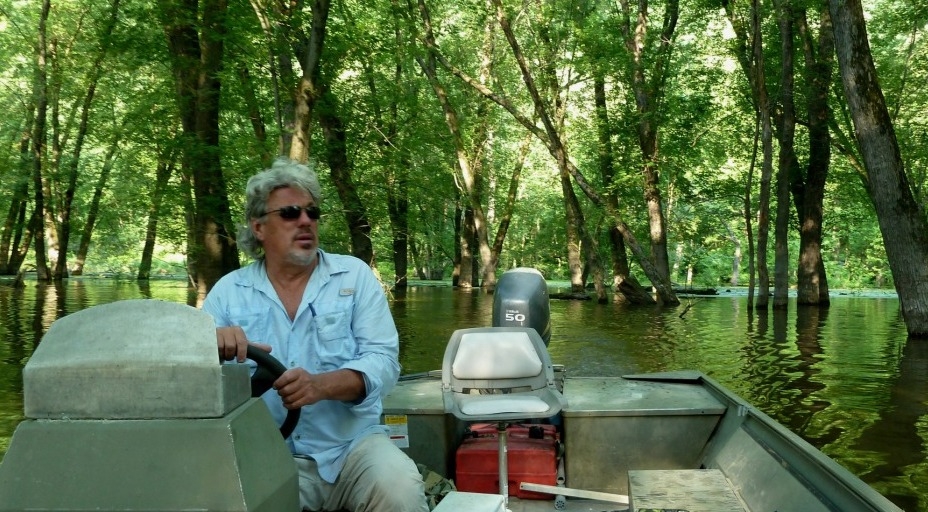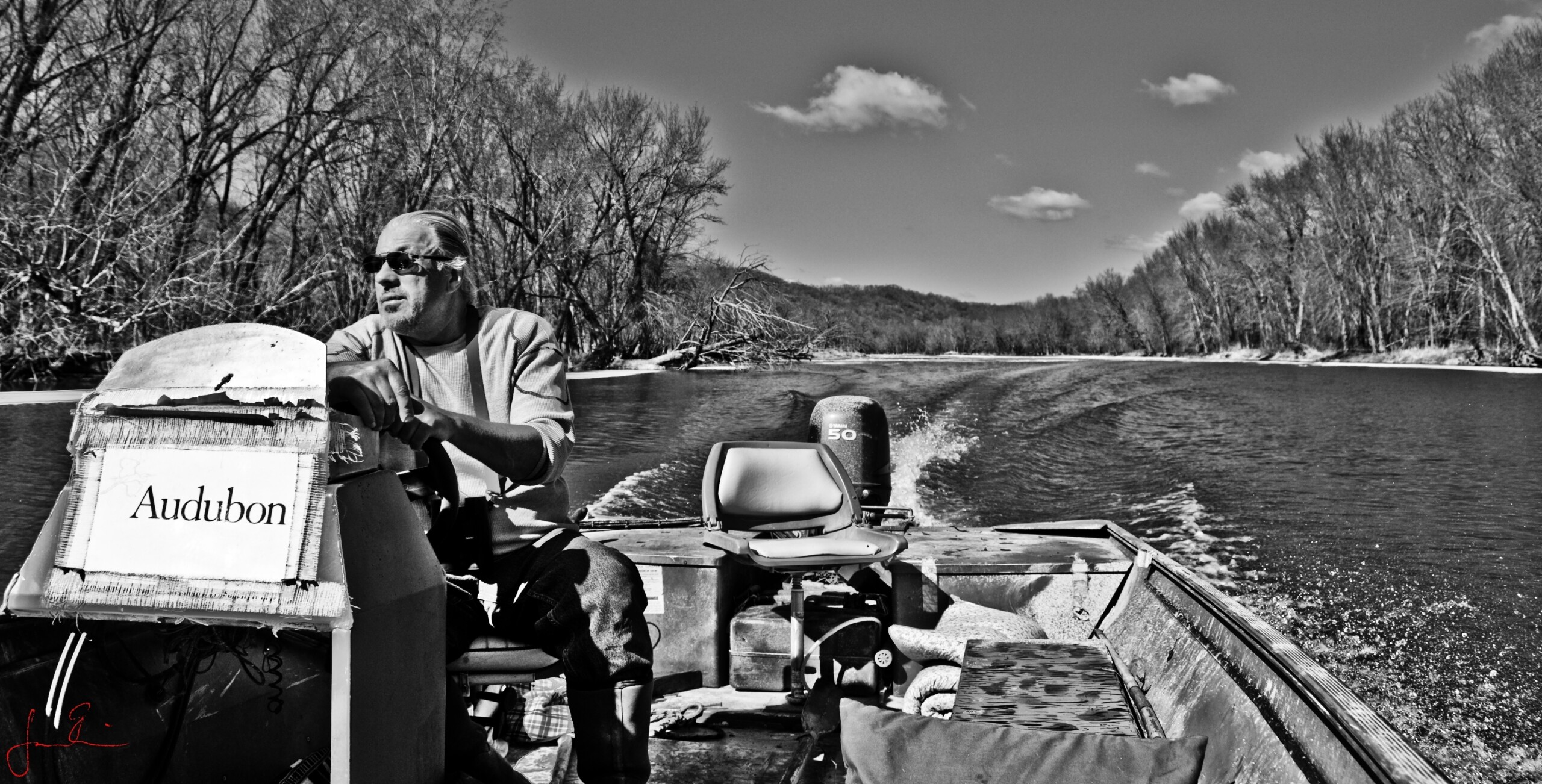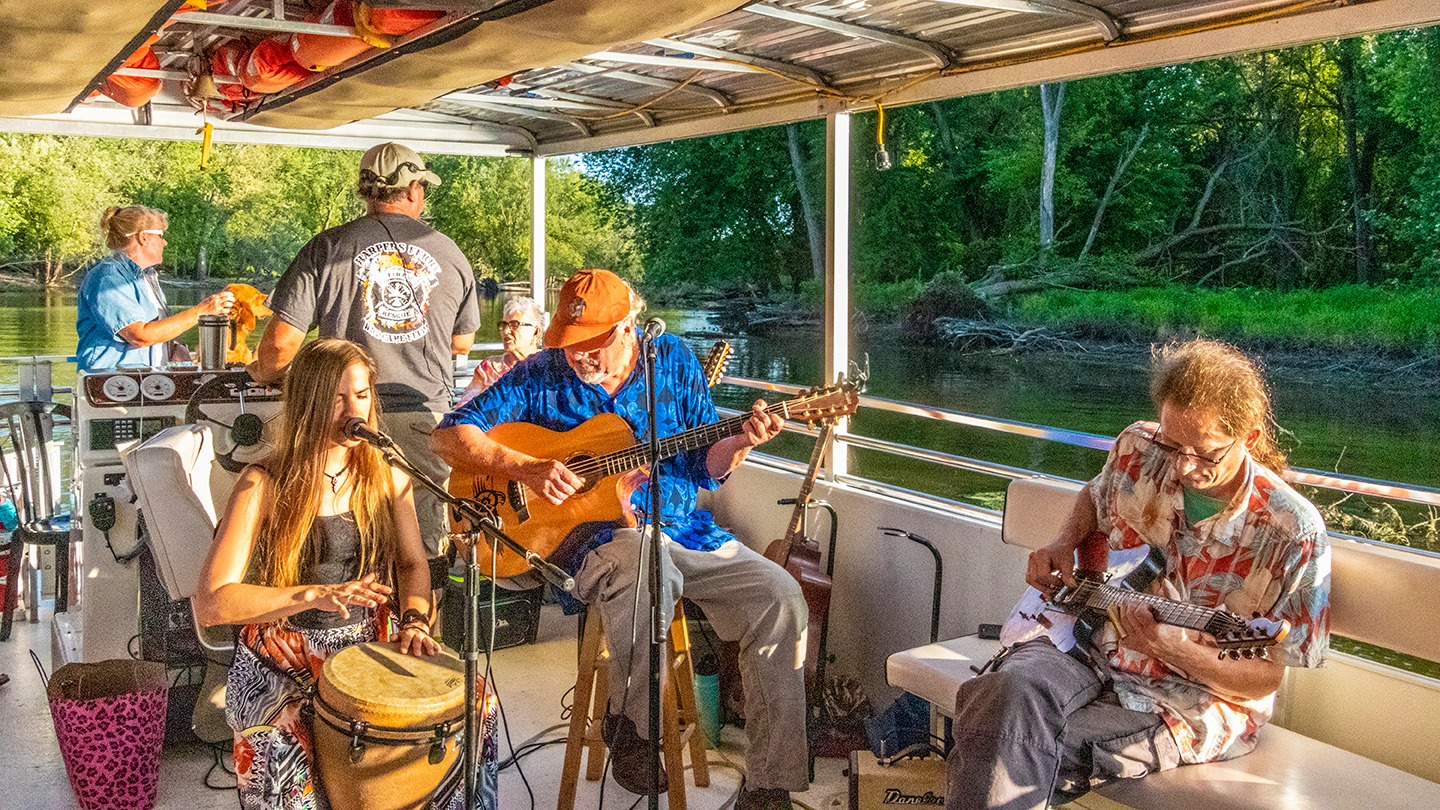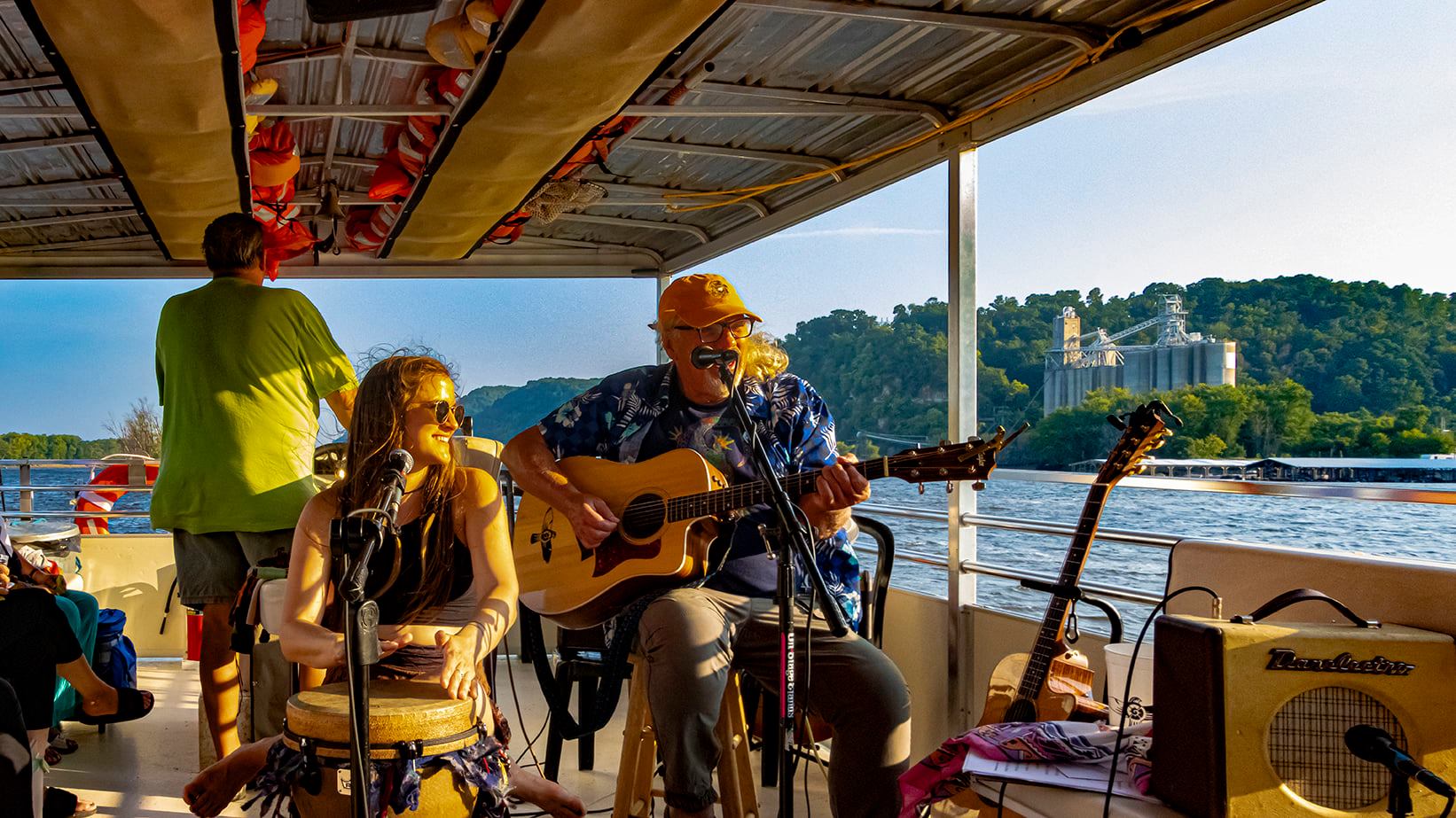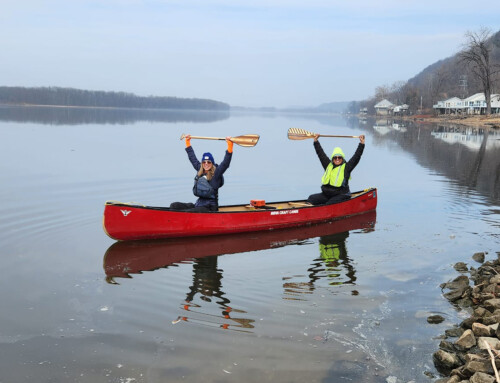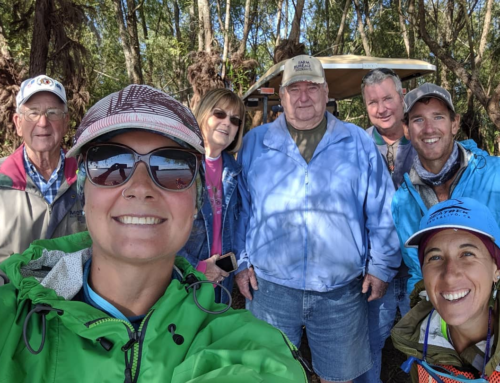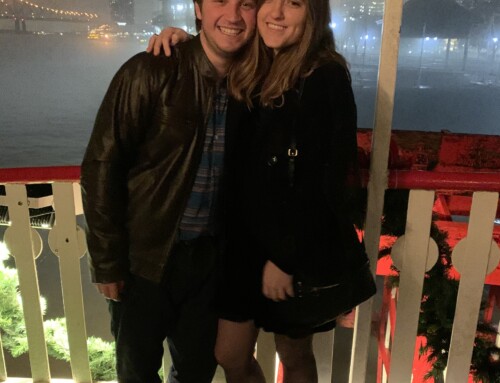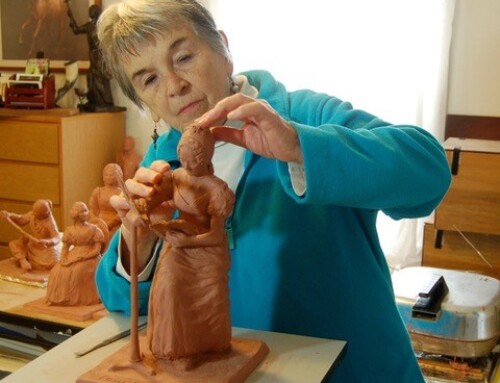The Hawk Man of Iowa is a title that one doesn’t acquire casually. Jon Stravers earned it because of his dedication to studying and understanding the lives of Red-shouldered Hawks. That work wasn’t part of any grand plan he’d had for his life.
He served in the Navy during the Vietnam War and felt out of place when he came back. “I didn’t necessarily adjust too well to society when I came back from Vietnam,” he said, “and so my solution was to escape, escape in a canoe. And it was then that I started this connection with birds and trying to figure out what everything was… I just worshiped the idea of being quiet and on the water.”
The water was a natural draw for him. His father was a fisherman. “I grew up with a reverence for wood boats and low motors and quiet and the water.”
Through his burgeoning interest in birds, he connected with Gladys Black, the “bird lady of Iowa” and found himself a new career. In 1976, he got involved with a raptor research project in the Mississippi River bluffs, then started studying raptor migration, something he is still doing today. In 1978, he began following the nesting behaviors of Red-shouldered Hawks in floodplain forests and, again, is still doing that today. After decades in the field, he has a pretty good understanding of Red-shouldered Hawk communications and can even identify individual birds from their calls.
In 2006, he noticed that the areas where he was working also seemed to attract a lot of Cerulean Warblers, an observation that no one else had made. The birds were in some trouble because of habitat loss. His work soon revealed that a large cluster of Cerulean Warblers nest in many of the same forests as Red-shouldered Hawks and that many return every year to those woods from their winter homes in South America. Because of his observations, parts of northeast Iowa were declared a Globally Important Bird Area.
Jon’s home territory covers a part of the river around McGregor, Iowa—thick backwater forests bisected by small side channels, tall bluffs, and gravel terraces built by deposits from glacial meltwaters that barreled down the engorged Wisconsin River.
“There’s so much diversity on the river, I mean, when you’re on the main channel it feels one way, but it certainly feels a lot different when you back in a small little channel, back in the woods when it’s flooded in the spring. It’s a whole different thing… “I’m a lucky person to be able to work on what I love and mess around in the floodplain forest.”
Jon also earns part of his living as a musician. He plays with a band called Big Blue Sky and is a regular presence on the Maiden Voyage cruises out of Marquette, Iowa. They have ten CDs of original music to their credit, much of it written about the river or birds and a spiritual connection between people and the natural world. The band plays a few concerts a year to raise money for one of the non-profits that supports his work, Driftless Area Bird Conservation.
Jon doesn’t take any of this for granted. He feels lucky to have found a place where he belongs, where he can feel “… the wildness of the backwaters and the side channels… I was lucky in that I recognized this was what I wanted to do, and I was lucky that I was able to find the right people around me to help me keep going.”
For the Hawkman of Iowa—Hawk Daddy to his grandchildren—the area where he works is a special place. “I think of it as a cathedral, and I’m in the cathedral, so it’s my work but I think it’s sacred.”
